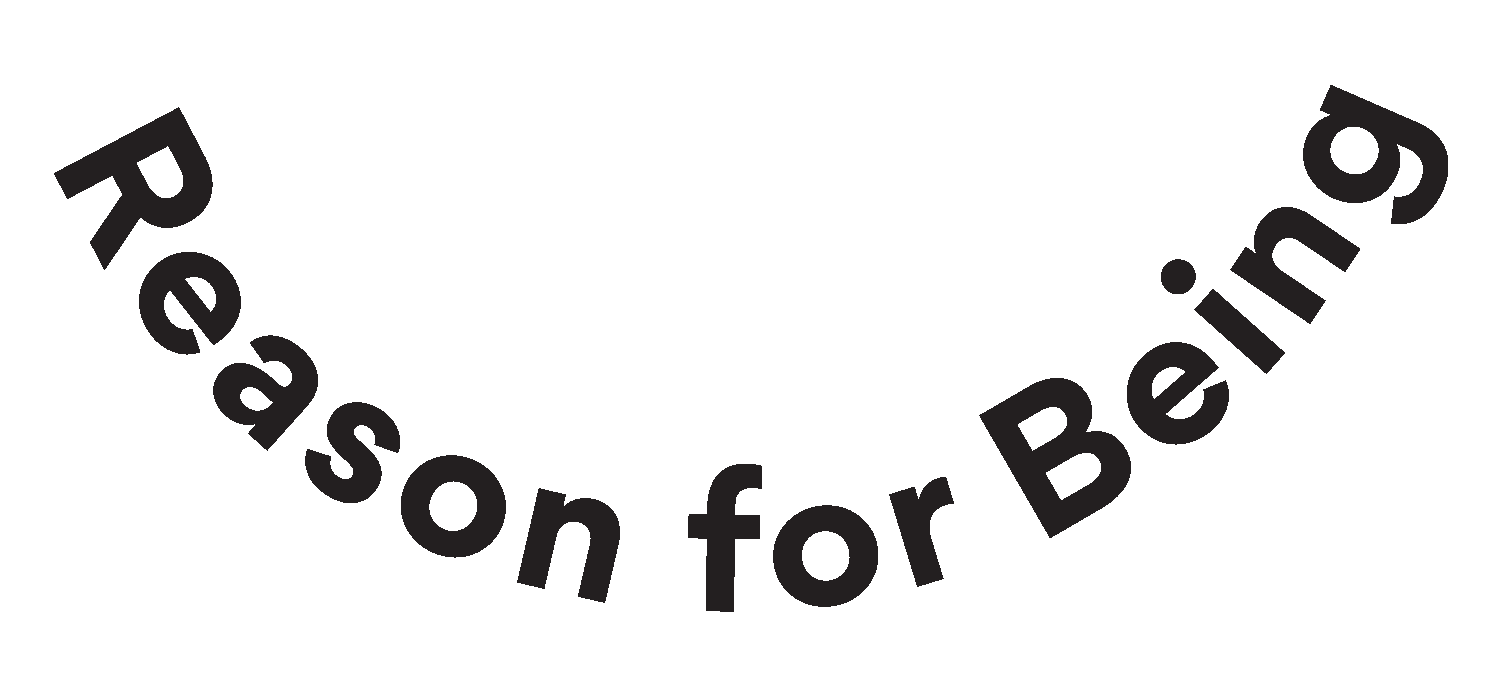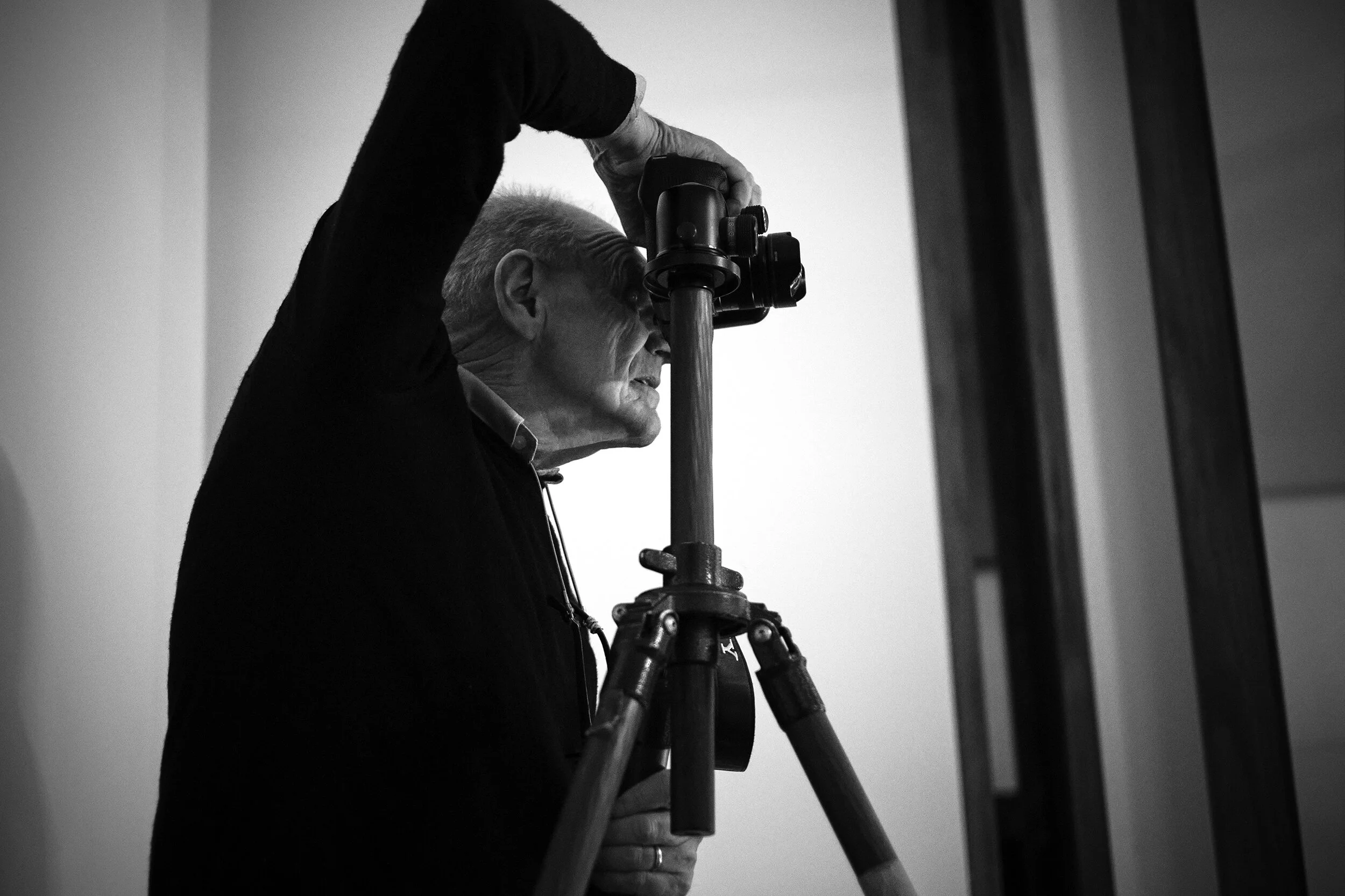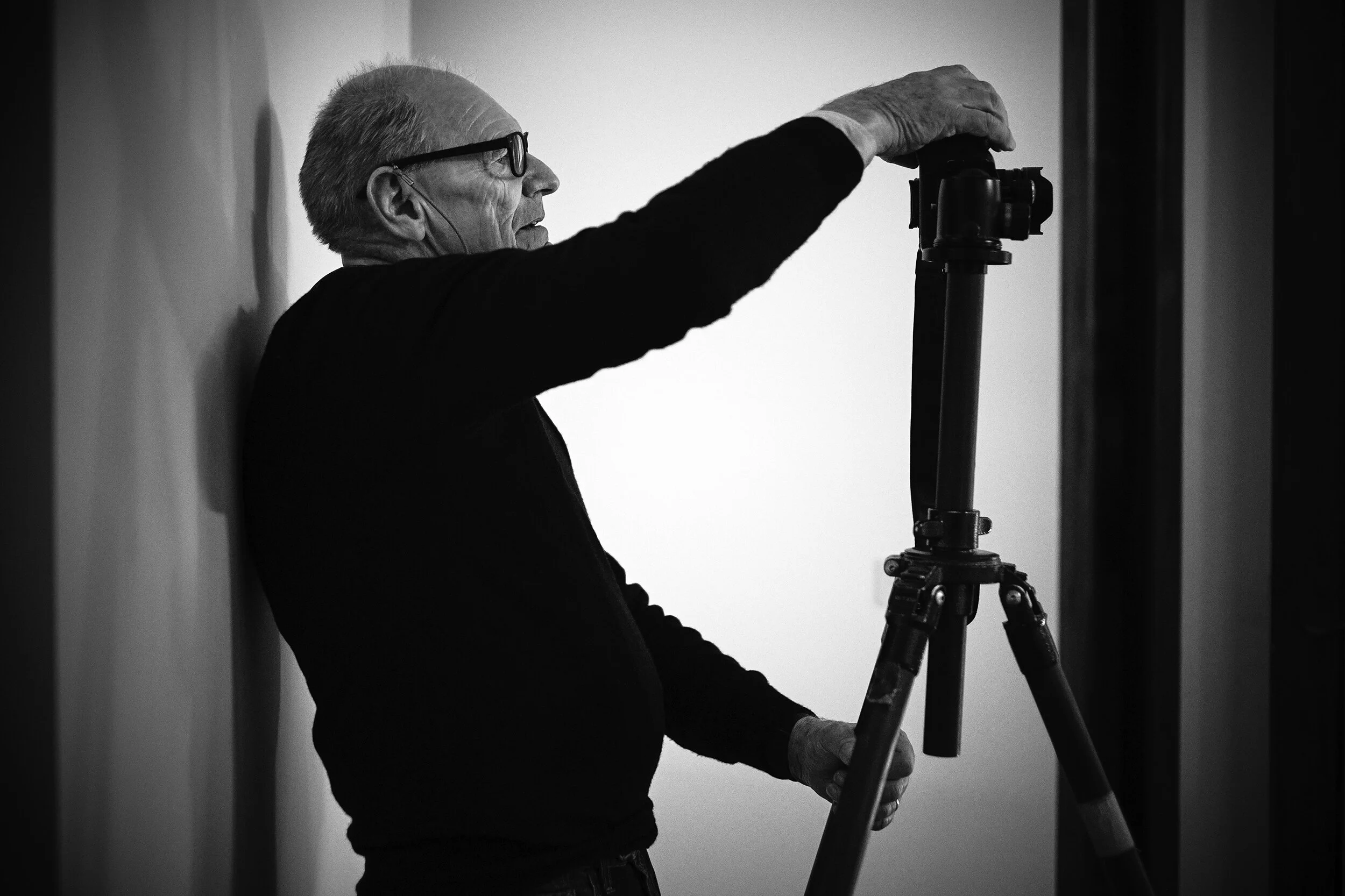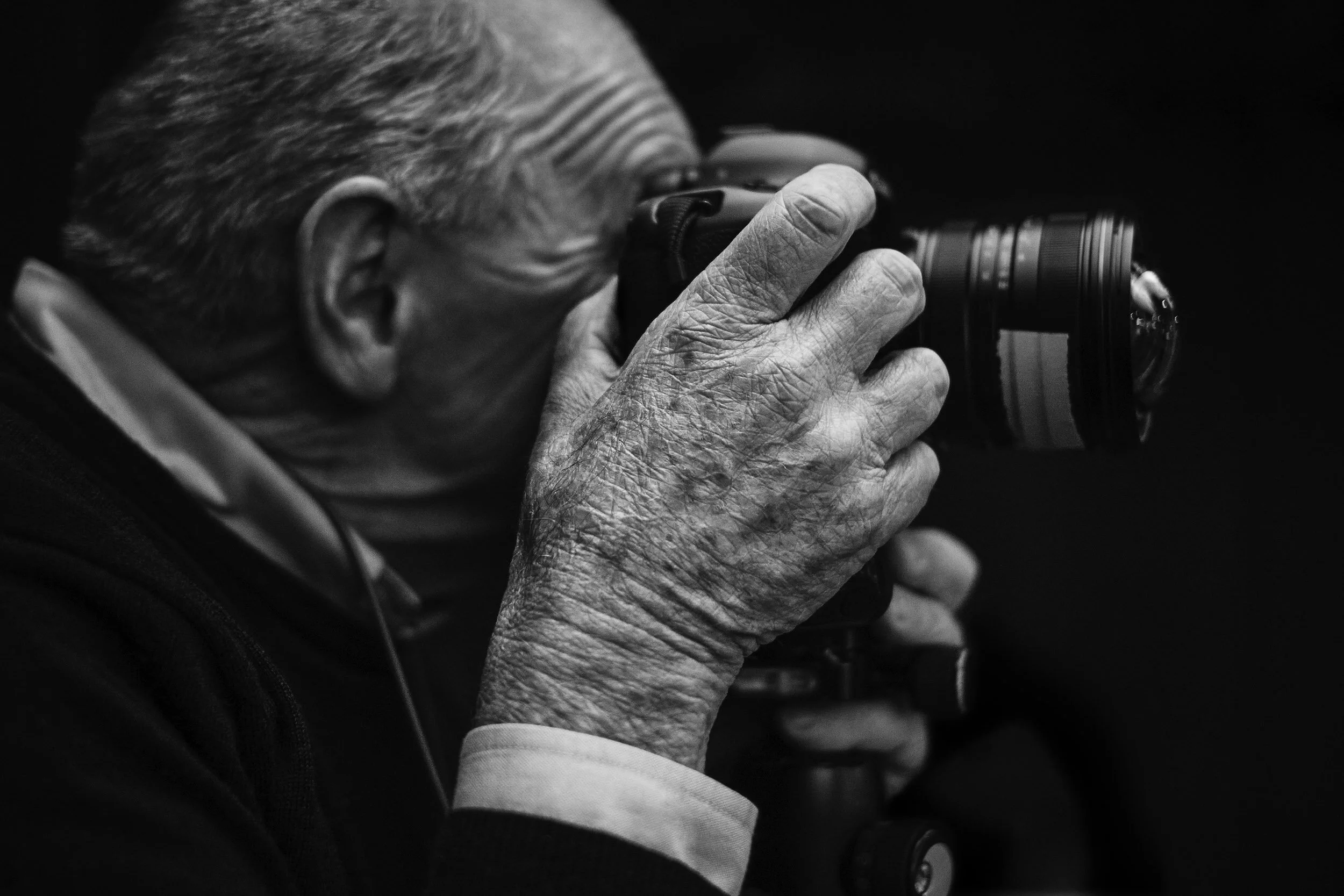Reason #1 / John Gollings / Photographer
Master craftsman…
Scroll ↓
John Gollings / Photographer
John Gollings (AM), born in 1944, is Australia’s foremost Commercial and Architectural Photographers with a career spanning more than 50 years. I was fortunate enough to be his full-time assistant between 1994-95. As my mentor, a father figure, and now a lifelong friend, I have always admired John’s tenacious passion for his craft. He is (for me) a true role model and a craftsman with an unwavering ‘reason for being’...
The following images were taken on 21st April 2021. I spent just over an hour observing John shooting a house in the inner city Melbourne suburb of Richmond. It’s my most intimate photographic portrayal of the great Gollings - doing what he (still) does best.
‘I’ve always had a fertile imagination & a general quest for creativity…’
- John Gollings
8.15am. It’s a brisk early Autumn morning in Melbourne as I arrive 15 minutes early to meet up with John at his studio in St Kilda. I call him on his mobile to let him know that I’m a little early, but he doesn't answer.
As I sit patiently on the cold concrete steps outside his studio door, I gaze longingly at the ivy-covered brick warehouse above. I have very fond memories of this place.
Twenty-five years ago, this very building was genesis, where my professional photography career began.
Eventually, the steel door opens behind me, and John apologises, telling me that he had his phone on silent, he seemed distracted.
He's still the same man I've come to know, always on the go.
As I enter, he explains that he was in the middle of updating the firmware on his brand new drone, which he's taking up to Queensland tomorrow for a shoot...
We sit down for our chat.
I start by asking him how his passion for photography began.
‘Growing up, we had a family camera, an English Holten-Butcher Box Ensign 6x9cm,’ John explains.
‘One of dad's workers, Ray Oliver, who worked for our family nursery business at the time, was an amateur photographer. He saw me looking at it one day and showed me how to use it.’
John fondly remembers the beautiful instrument and that afternoon he captured his first-ever photograph.
‘Dad used to have mounds of dirt everywhere to make compost, and they were two metres high, like mountains. I placed my brother halfway down the mountain with my sister standing on the mound - so she appeared to be standing on his shoulders.’
After seeing the ‘tiny contact print’ of his first-ever photograph, which Ray processed for him, John said he was ‘blown away.’
Propelled by his enthusiasm, Ray took him under his wing and taught him how to process film and make prints in his home darkroom - at age 11, John was hooked.
I reminisce with John. It’s uncanny how our early beginnings are very alike.
I, too, picked up a camera at age 11 and remember my first ever photograph - a picture of a duck (not as ‘trick’ as John’s picture, mind you). My photographer father then took me under his wing and introduced me to the art of photography.
We get onto talking about his first camera...
He remembers there was a chemist/camera store in Bentleigh.
‘They had a window full of cameras, and I would spend hours after school just looking at them, hoping to own one of these cameras one day.’
Finally, when John was 12, his dad took him to Wagners, a big camera store in the city (Melbourne). He bought him a German-made Agfa Ambi Silette 35mm Rangefinder - his first real camera.
‘That camera I used all the way through school’, says John, ‘documenting everything that happened.’
Eventually, when his family moved to East Brighton, his father built him his very own darkroom in a corner by the garage. John worked for a local chemist as the delivery man and spent all his earnings on buying film, chemicals and photographic paper.
Although John had developed a new passion for photography, it was seen as a trade, more like a hobby by his parents. So they (eventually) encouraged him to get an architecture degree, hoping he would join his family’s building firm at the time.
But as John says, ‘dad hated my modern designs because he was a conventional builder.’
Despite this, he went to Melbourne University and began his studies in Arts and Architecture. In his third year, however, he rediscovered his passion for photography.
‘We had a tour of the Holmsglen concrete factory which made panels for all the high-rise housing commissions flats going up all over Melbourne. They were seen as cutting edge Swedish industrial designs, and I had to photograph them for my school assignment.’ He quickly fell back in love with photography and decided to ‘ditch architecture’ and defer his studies.
During his sabbatical, ‘Orpin & Bourne’ (a partnership of art director Kevin Orpin and advertising photographer Bob Bourne) in Melbourne offered John a photographic assistant role.
They eventually took him in as the studio’s new young upcoming photographer.
His first advertising job was for a Marlboro cigarette campaign with a measly budget of $210. At the tender age of 22, he accumulated an impressive array of advertising accounts of Shell, Comalco, Hyatt and Oberoi hotels and fashion works for Sportsgirl and Levante Hosiery.
So I ask, when did he become known for his architectural work.
‘There was a recession in the mid-1970s’, John explains.
‘Melbourne was the home of wholesale fashion manufacturing. I had many clients in this sector shooting their brochure work, but eventually, companies like Sportsgirl went broke. My fashion photography career died because the industry in Melbourne died.’
Meanwhile, some of his friends from architecture school, such as Denton Corker Marshall, Peter Corrigan and Greg Burgess, began building their first commissions. According to John, he was their ‘photographer mate’, ‘so they began to book me, instead of other more established architectural photographers.’
‘I had a reputation for doing something different, so I thought I was carving out a separate niche - such as shooting buildings with flash at night.’
Soon he was starting to get some decent architectural commissions, and John realised at that point that;
‘...fashion photography was this ephemeral, great fun industry. But once you take a picture of the garments for the season, that was it - no one wanted a twelve-month old fashion photo. Whereas I could create a lasting archive of Architectural Photography, so I decided to commit myself more or less to architecture.’
His architecture mentors included Architect Harry Seidler, photographers Max Dupain and Wolfgang Sievers, who taught him a thing or two...
‘One thing in particular that (Harry) Seidler taught me was that you have to photograph the whole building - you must not crop into a building. Harry told me off once for doing so, and I’ve never forgotten that - so now, every shot of mine has the whole building in it.’
With Max Dupain, he admired his work ethic. ‘He took the pictures he wanted to take, except for working with Harry Seidler, where we both had the same experience (of being told off). He’d take the shot that Harry wanted, but he would still do his own.’
‘I’m a bit surprised that they gave me the time of day, to be honest These guys were my heroes - powerful outgoing men who left lasting legacies. I was impressed by their personalities.’
I ask John if having his own lasting legacy is important (to him).
‘Not to me personally, but I hope that my extensive documentation of Australian history is not wasted.’
‘My archive is a valuable learning curve and teaching vehicle for the next generations. There has to be some value in most photographer’s work. I have shot most of the significant buildings, but there’s still an awful lot that I haven’t done...I want to add more to my Gollings archive before I die; I've got ten years left...’
During my ‘fly on the wall’ session photographing John, I noticed his unwavering enthusiasm, even more so than I remembered over two decades ago...
John says, to this day, he is still looking for 'new ways of doing things...’
‘I’ve always had a fertile imagination and a general quest for creativity. I am always competing against myself. I want to prove that I can match anyone’s style, I'm competitive, it’s fundamental insecurity.’
He says he likes to prove, to himself (and others) that he is good as everyone else, and that's what drives him to do better.
He was always (and still is) ‘curious about everything’.
‘It’s born into me, I suppose’, he says, ‘I have to know how things work for myself, and I apply it every single day of my life. I prefer my own judgement.’
He thinks his ‘reason for being’ is just incessant curiosity.
‘Imbued in me by my parents was the assumption that I would work for myself, which meant doing whatever I wanted to - without regard for money. So I chose photography because it satisfied so many areas of curiosity (for me). My career was (and still is) doing what I love. I was (and still am) good enough and enthusiastic enough that people keep commissioning me for my craft - and it hasn’t stopped.’
As our (scheduled) conversation comes to an end, John concludes, ‘I’m still doing a few portraits these days. Later today, I’ve got to do a picture of a man who is dying. It’s of him and his wife, and it will be the defining shot. They had a computer meltdown and lost all the pictures of each other; they’re in their 80s.’
I ask him who commissioned him.
‘Well...they invited me to his living wake on Saturday - he wants to be at his own funeral. I can’t go because I will be away shooting a job in Queensland, so I thought, what else can I do? So I said I would like to come and say goodbye, but can I take a portrait of the two of you for keepsake? They thought it was a wonderful idea...’








